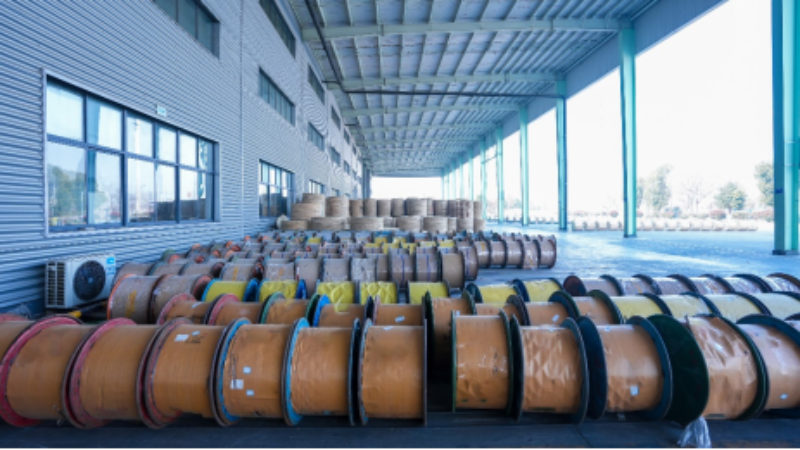The implementation of 5G is ushering in a new regime in telecommunications, with speedier connectivity, lower latency, and more. However, high-speed networks such as these depend on one important infrastructure element-an unseen backbone-fiber optic cables-that act indispensable for the full potential of 5G to ever be realized. In this article, the critical role of optical fiber and cable technology in the construction and care for 5G networks will be discussed.
Fiber Optic Cables: The Backbone of 5G
The high-speed data transfer, low latency communication, and other unprecedented feats created by the advent of 5G are mostly powered by the fibers that are integrated into the backbone infrastructure of this new cell network. Fiber optic cables become the nerves of these dis-leaking pieces, sending massive data streams back into the cores. This is quite different from traditional copper cables because it has bandwidth and speed capabilities that are invaluable for supporting such lofty performance goals."

High-Speed Data Transmission
Indeed, high-speed data transmission is a major characteristic of 5G Fiber optic cabling is highly suited for such phenomena because it can carry a huge amount of data over long distances without major losses. Thus, this guarantees the flawless operation of data-dominant applications-a good example of this would be high-definition video and augmented reality. Broadcasting in live 4K and 8K resolutions requires connections that are extremely robust and stable, such as those found in fiber networks.
Real-Time Low Latency Applications
Low latency is another prime characteristic of 5G networks for real-time applications, including autonomous driving, industrial process automation, and beyond. Such applications require low-latency characteristics of fiber optics, as any delay, however small, would cause significant impacts on the applications' functionality. For example, in autonomous vehicles, sensors and cameras need to interact between each other and with control systems within very short time intervals. Otherwise, traffic safety will be endangered or severely hampered in operation. Fiber optic cables provide instantaneous data exchange, which is necessary to guarantee the wider adoption of intelligent transportation systems.
OPGW: A Game-Changer in 5G Infrastructure
Among the different categories of fiber optic cables, optical ground wire (OPGW) is the most important for 5G infrastructure. It combines two functions-that of an optical fiber and ground wire-also proving useful in the case power transmission lines, OPGW could be reliable data connectivity along these high-voltage networks without sacrificing electrical safety.

Applications of OPGW in 5G
High voltage power lines: Utilizing OPGW lines installed on existing power lines as part of power and communication networks usually reduces the cost of laying the installation. This implies that 5G networks will propagate easily and quickly with this approach. Rural connectivity: Beyond that, it usually plays a major role in extending the reach of 5G services into remote and underserved areas. Whereas, by duly fitting power line networks, it can also change the scenario by enabling high-speed connectivity in previously unreachable regions. Increased Reliability: OPGW cables are well built to withstand harsh environmental conditions, thus making them reliable for critical 5G applications.
Fiber Optics and the Use Cases on 5G
However, fiber optics do not only extend benefits to their cores in connecting a network but also offer many transformational opportunities:
Smart Cities: Budgets for smart city schemes will be covered by fiber optics which provide the necessary bandwidth to interconnect systems like traffic management, energy grids, and public safety networks. Such fiber optic high-speed networks allow for real-time analysis of data that can transform cities in terms of the resource utilization and quality of life.
Industrial Automation: 5G takes industrial automation to an extended level when coupling it with fiber optic connectivity. Fiber optic cabling brings machine and equipment components such as sensors and control systems into an influencing communication platform of high-speed, real-time data transmission to enhance outputs and lower operational costs.
Telemedicine: Transforming the healthcare landscape, the combined application of telemedicine with 5G and fiber optics enables functionalities like remote surgery and teleconsultation. Their fiber-network-speed and latency low down the critical data conveyed between patients and doctors for better medical outcomes.

OYI International., Ltd. Catalyzing 5G Innovation
As a leader in fiber optics, OYI International, Ltd. is at the forefront of shaping the future with 5G technology. Founded in 2006 and based in Shenzhen, China, OYI specializes in designing and manufacturing cutting-edge fiber optic solutions such as fiber and cable products, OPGW, and complete fiber network systems. OYI is present in 143 countries and has a solid R&D team which ensures its commitment to improving global telecommunications infrastructure.
Diverse Product Range
ADSS, ASU, Drop Cable, and Micro Duct Cable are some of the broad spectra of products within OYI catalog that also specializes in other solutions specifically designed and created for the delivery of 5G networks. Its drive towards innovative and quality products offers more than performance in reliability and scalability.
Acknowledging the environmental effect of the telecommunications infrastructure, OYI has adopted those processes into the systems of manufacturing that use sustainability to produce energy-efficient products with little waste contributions at OYI to greener futures, driving the global rollout of 5G networks.

The importance of fiber optic cables in the 5G networks can never be emphasized more. Indeed, with ever-increasing demand for connectivity with higher speeds and lower latencies, fiber installation becomes ever more critical in modern telecommunications. From enabling applications such as autonomous driving and smart cities to improving the reach in rural areas, fiber optics increasingly determine the future of connectivity.
Under the leadership of companies like OYI International., Ltd. such advanced fiber many are making a reality of the beautiful promise of 5G. Investing greatly in cutting-edge technology and innovating is indeed a great key, not just for global telecommunications but for a much more connected and sustainable world.

 0755-23179541
0755-23179541  sales@oyii.net
sales@oyii.net
